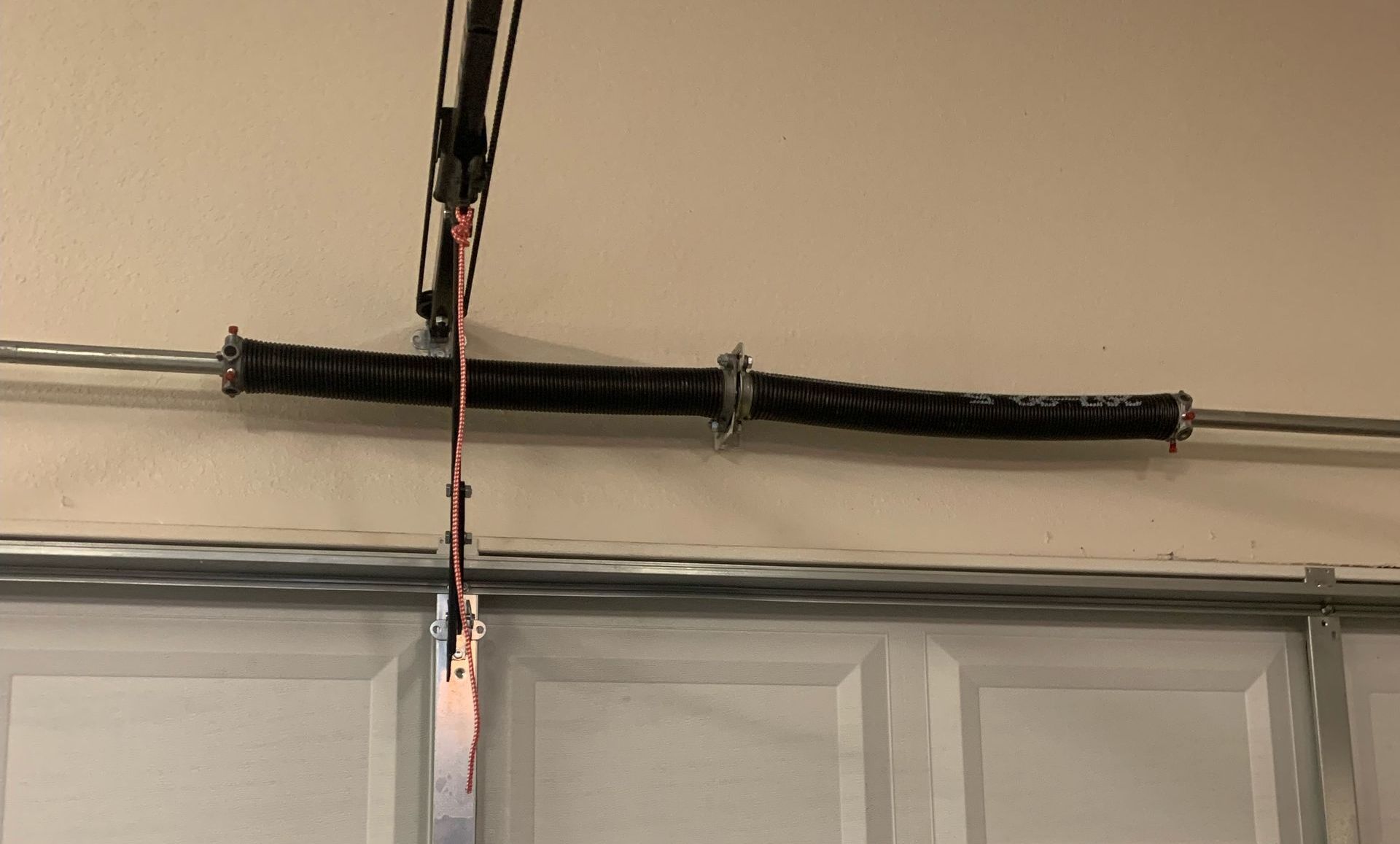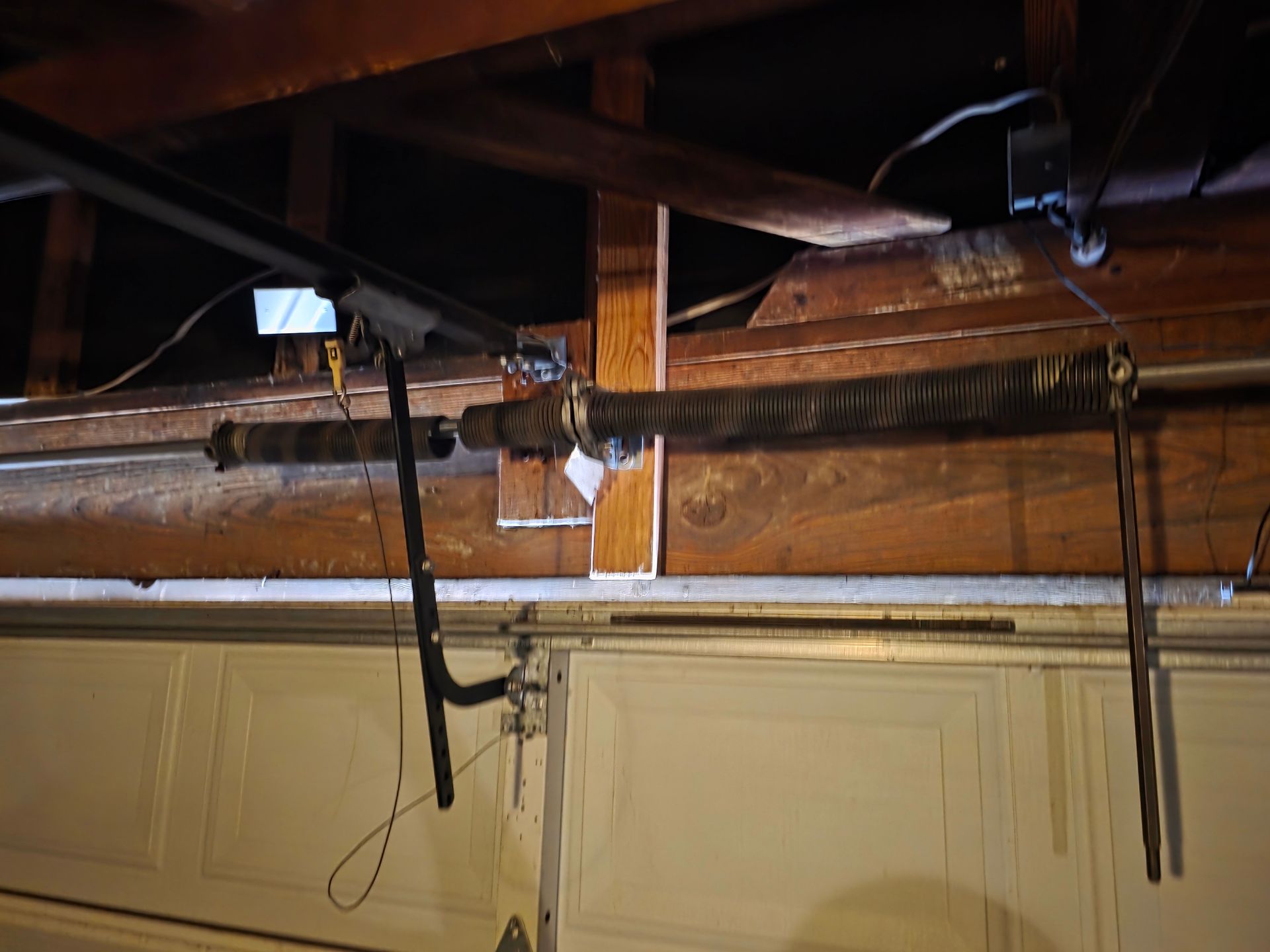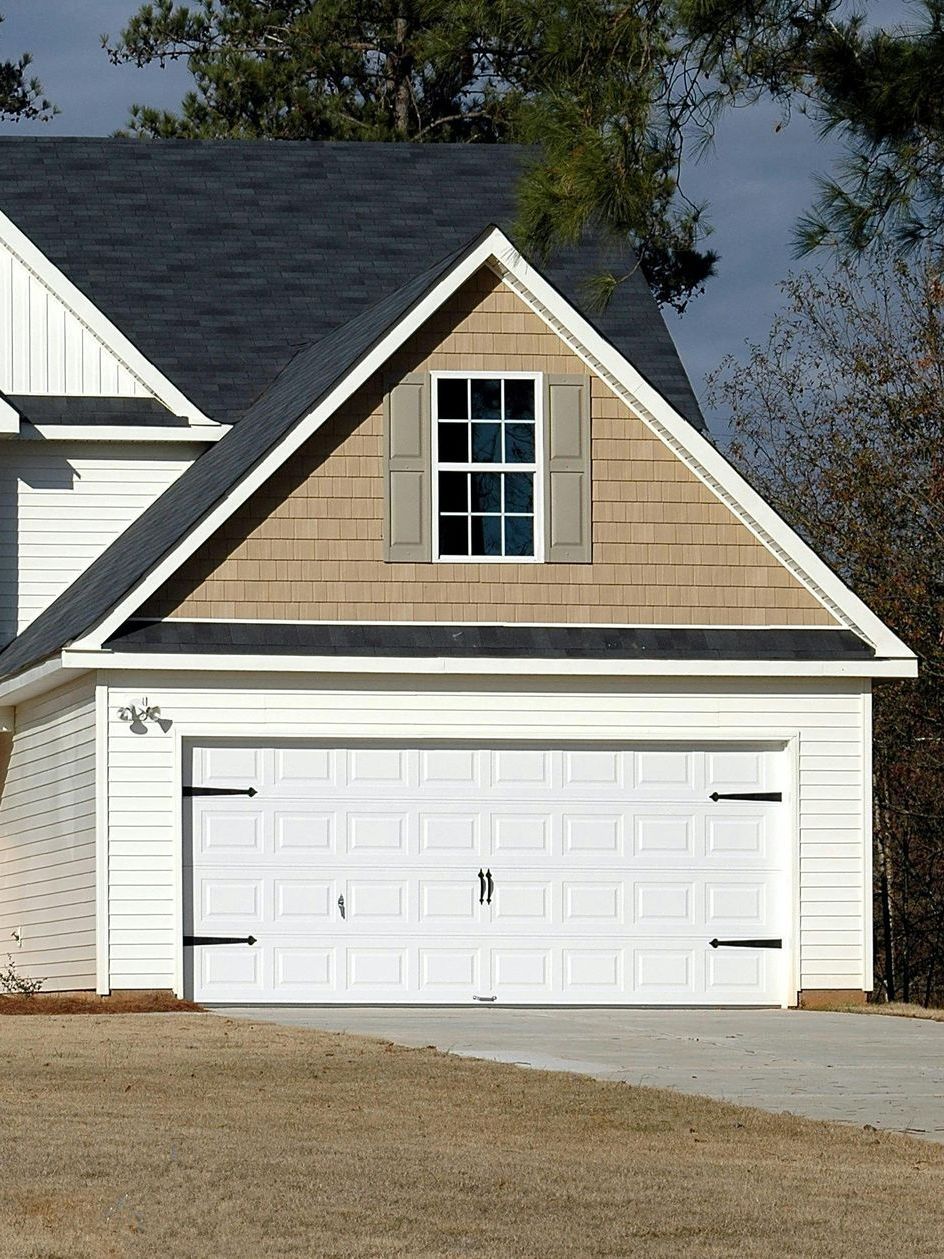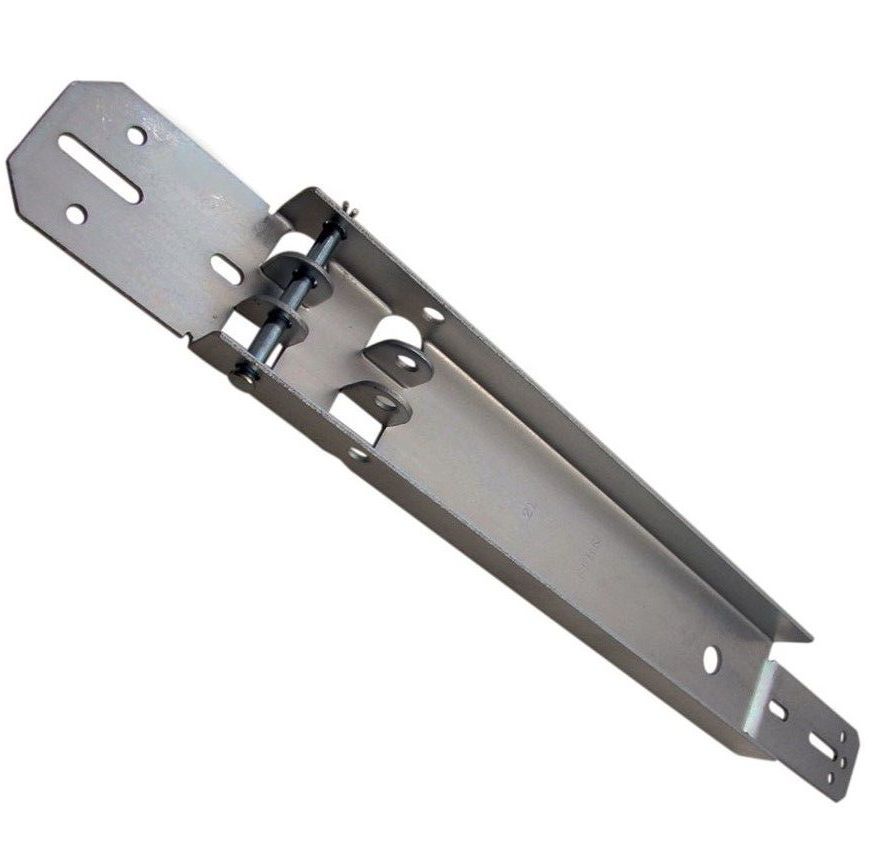Are Your Garage Door Torsion Springs Balanced Properly?
Garage Door Torsion Springs

Should You DIY Garage Door Springs?
There are many aspects to understand about garage door torsion springs and their replacement. Numerous websites and videos showing you how to change them yourself, using galvanized or oil soaked, some will count the number of coils within a certain measurement to determine the wire diameter of the torsion spring, some will use a spring gauge to determine the wire diameter of the torsion spring, and some will look at the color coding i.e. yellow, red, green etc. This can be somewhat overwhelming to an untrained service technician or “Do it Yourselfer”. It looks simple enough… how hard can it be???
But wait….
What if these methods don’t give you the correct wire diameter and spring size, show the proper technique to install safely, or worse yet, the garage door had the wrong torsion springs on it to begin with. We find this all too often in the field that the garage door has the wrong torsion spring or springs, not wound properly or not wound at all. As a homeowner how can you tell if they are the correct torsion springs that are installed on your garage door?
Unfortunately… you can’t.
Truly the most efficient and proper way to make sure the correct torsion springs are on the garage door is to weigh it and calculate the correct IPPT (Inch Pounds Per Turn). Yes, weigh it. It is a counter balance system and if it is off balance the garage door is not going to work properly. Now most companies will “manipulate” the garage door torsion spring(s) and make it work. However, the homeowner will not know this and over the long haul there will be issues with the garage door and/or garage door opener.
Some Examples of Garage Door and Garage Door Openers Problems:
- Excessive wear on the garage door opener gear and sprocket shaft assembly.
- Garage door opener up and down force settings set to high.
- Cable coming off of the torsion drum and causing the garage door to come off track.
How Can I Tell if My Garage Door Torsion Springs Are Properly Balanced?
- With the garage door in the down position pull your emergency release cord and disengage the garage door opener from the garage door opener rail.
- Lift your garage door half way up manually. Two panels should be above the header and two panels below the header.
- Release your hand from the garage door.
- If your garage door starts to roll down your garage door torsion springs need to be adjusted. (Call a professional)
- If your garage door stays in place it would appear that your garage door is balanced. Now…
- Lift the garage door all the way up to the open position.
- If the garage door “sucks” up in the header quickly and takes a lot of effort to pull down then you may have an issue. (Call a professional)
- If the garage door lifts smoothly and stays up in the header without rolling back down, your garage door torsion springs are balanced.
- If the garage door starts to roll back down the tracks, the garage door torsion springs need to be adjusted. (Call a professional)
WARNING: NEVER ATTEMPT TO REPLACE OR ADJUST GARAGE DOOR TORSION SPRINGS ON YOUR OWN. THEY ARE UNDER EXTREME PRESSURE AND EXTREMELY DANGEROUS. COULD CAUSE SERIOUS BODILY INJURY OR DEATH!



